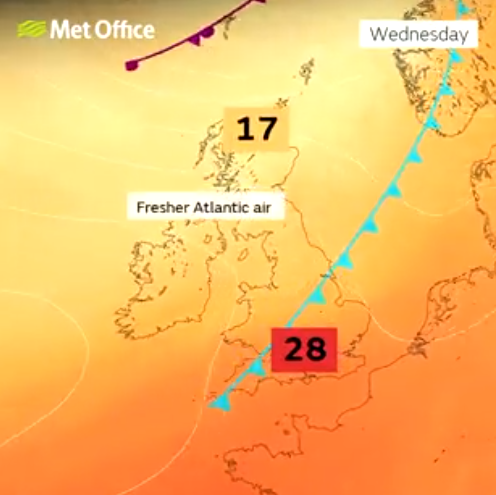UK heatwave: Amber extreme heat warning issued for ‘exceptionally high’ temperatures
Large swathes of England and Wales covered by alert as temperatures could rise to 35C

Your support helps us to tell the story
From reproductive rights to climate change to Big Tech, The Independent is on the ground when the story is developing. Whether it's investigating the financials of Elon Musk's pro-Trump PAC or producing our latest documentary, 'The A Word', which shines a light on the American women fighting for reproductive rights, we know how important it is to parse out the facts from the messaging.
At such a critical moment in US history, we need reporters on the ground. Your donation allows us to keep sending journalists to speak to both sides of the story.
The Independent is trusted by Americans across the entire political spectrum. And unlike many other quality news outlets, we choose not to lock Americans out of our reporting and analysis with paywalls. We believe quality journalism should be available to everyone, paid for by those who can afford it.
Your support makes all the difference.An amber extreme heat warning has been issued for “exceptionally high” temperatures across large swathes of the UK ahead of further soaring temperatures this week.
The warning is in place from midnight on Sunday 17 July until 11.59pm that night, when temperatures are predicted to soar into the 30s, but the forecaster added it could be extended to Monday next week.
The Met Office said temperatures could rise to in excess of 35C in the southeast and more widely to 32C within the warning area, which is likely to have adverse health effects for the public, not just limited to the most vulnerable.
The warning is being enforced across the east Midlands, east of England, London, southeast, northeast, northwest, southwest, wales, west Midlands and the Yorkshire and Humber region.
A statement from the Met Office said: “Population-wide adverse health effects are likely to be experienced, not limited to those most vulnerable to extreme heat, leading to potential serious illness or danger to life.
“Government advice is that 999 services should be used in emergencies only; seek advice from 111 if you need non-emergency health advice.
“Substantial changes in working practices and daily routines (are) likely to be required. Significantly more people are likely to visit coastal areas, lakes and rivers leading to increased risk of water safety incidents.
“Delays on roads and road closures are possible, along with delays and cancellations to rail and air travel, with potential for significant welfare issues for those who experience even moderate delays.”
The Met Office said highs of 33C are expected in some areas this week, with central, southern and eastern England all experiencing the rising temperatures during the heatwave.

It could mark the hottest day of the year so far, with the UK’s record high for this year currently standing at 32.7C. It was recorded at Heathrow on 17 June.
The warm weather is expected to continue through the week in the high 20s for most until the weekend, when the mercury may rise again to 31C in places such as London, Reading and Oxford.
This means parts of the country will be hotter than some of the world’s top beach destinations, including the Maldives and Marbella in Spain.
A Level 3 Heat Health Alert, issued by the Met Office and the UK Health Security Agency (UKHSA), is also in place until 9am on Friday 15 July in the east and southeast of England, with the rest of the nation having a level 2 alert in place.
The four-level system highlights the potential health impacts of these high temperatures.
Experts have warned the UK needs to urgently adapt to a future with more heatwaves, adding that hot spells have a greater potential impact than other climate extremes such as flooding.
Additional reporting by Press Association




Join our commenting forum
Join thought-provoking conversations, follow other Independent readers and see their replies
Comments